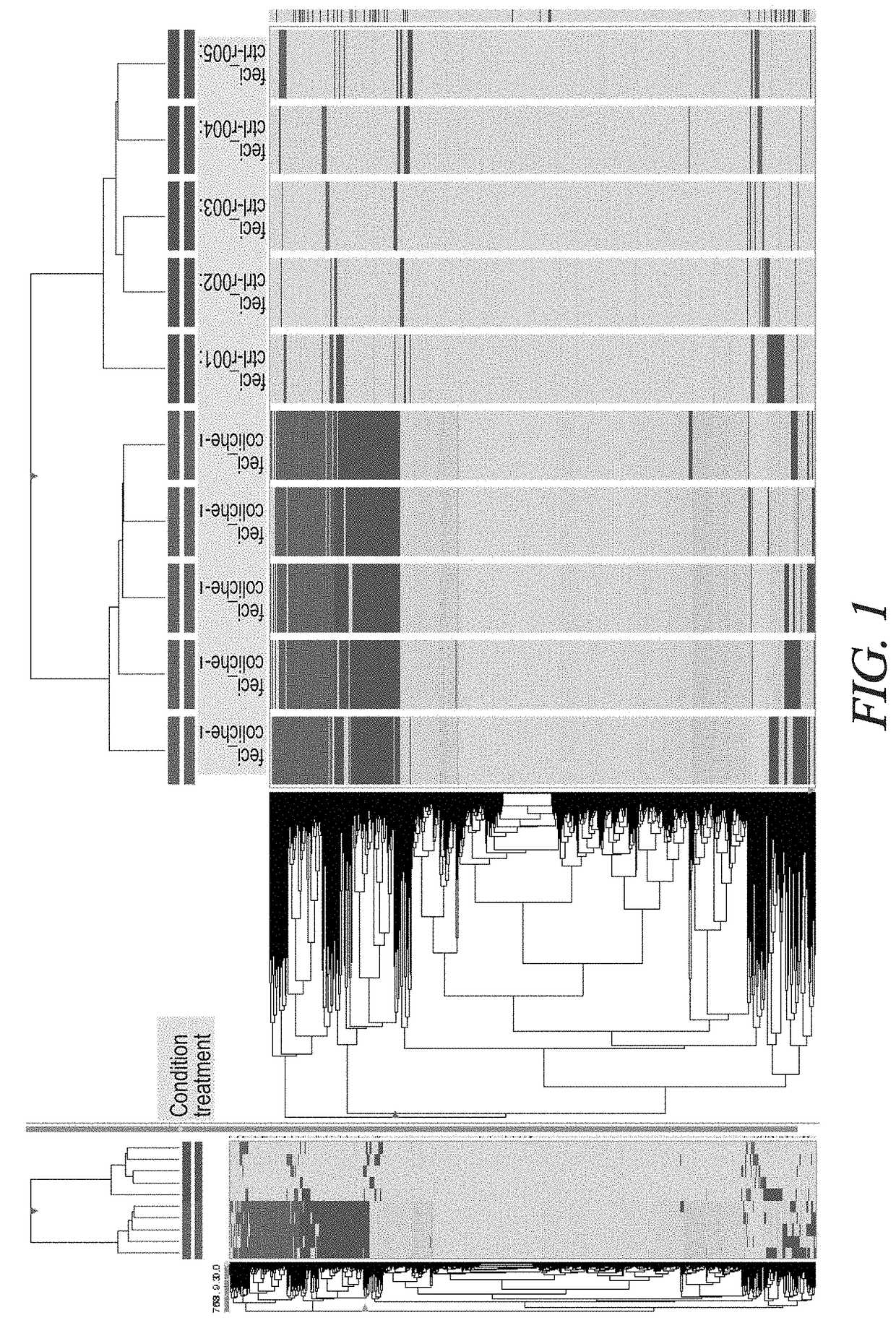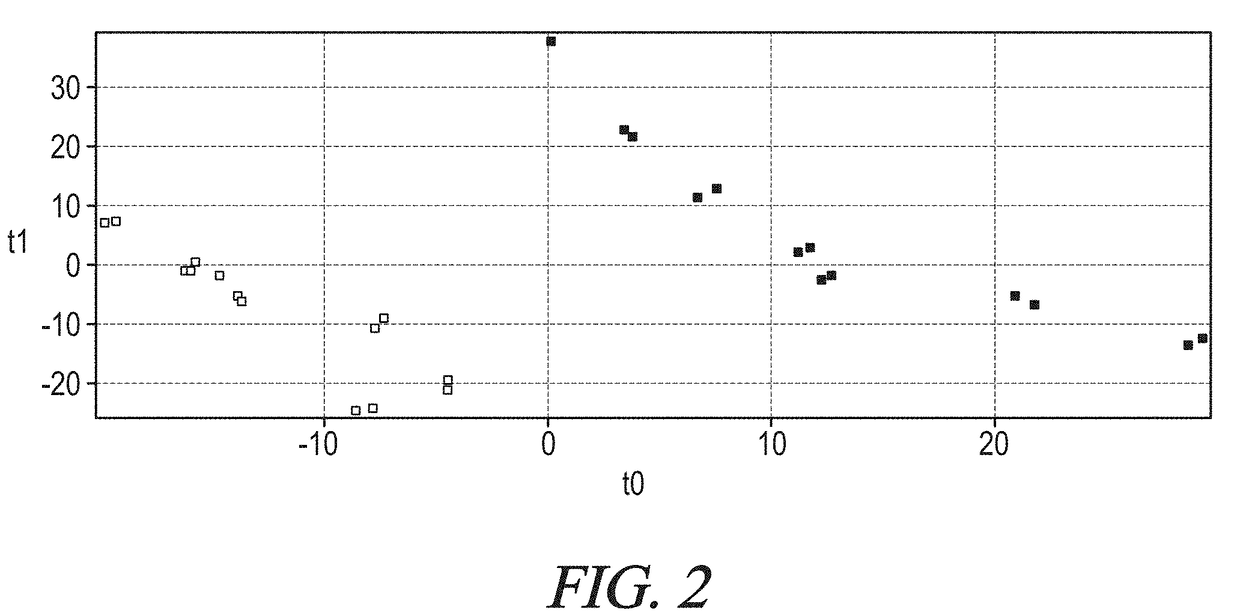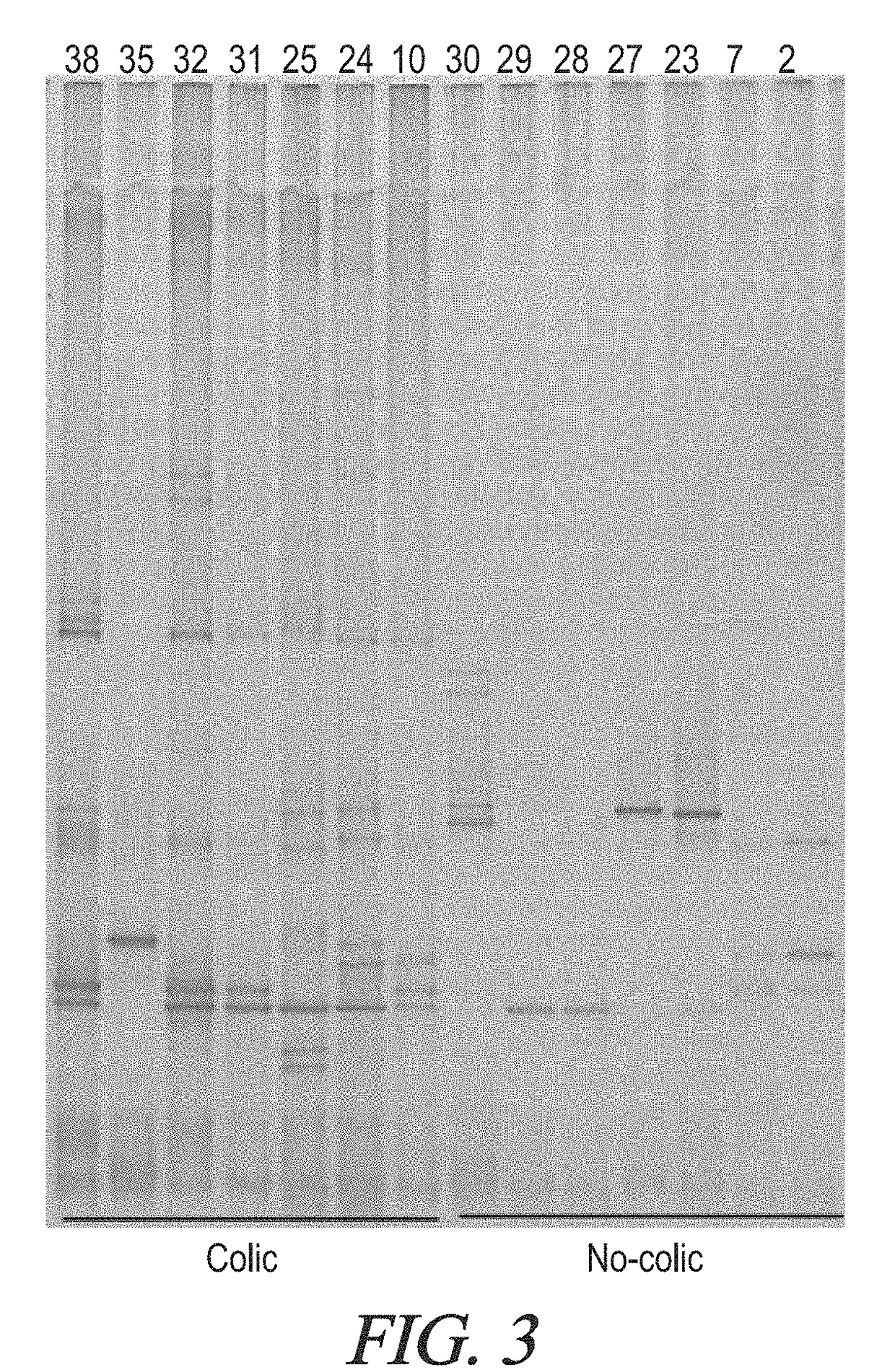Nutritional compositions providing dietary management of colic
a technology of nutritional compositions and colic, applied in the field of colic management, can solve the problems of significant emotional distress and discomfort of parents, and achieve the effect of increasing the ratio of la metabolizing probiotics
- Summary
- Abstract
- Description
- Claims
- Application Information
AI Technical Summary
Benefits of technology
Problems solved by technology
Method used
Image
Examples
example 1
[0227]This example illustrates an embodiment of a nutritional composition according to the present disclosure.
Ingredient List:
[0228]Lactose (cow's milk), blend of vegetable oils (palm olein oil, coconut oil, soybean oil and high oleic sunflower oil) (plant), non fat milk powder (cow's milk), whey protein concentrate (cow's milk), galacto-oligosaccharide (cow's milk), polydextrose (plant), minerals (calcium carbonate, calcium phosphate, cupric sulfate, ferrous sulfate, magnesium oxide, manganese sulfate, potassium chloride, potassium citrate, sodium citrate, sodium iodide, sodium selenite, tricalcium phosphate and zinc sulfate), emulsifier (soy lecithin) (plant), single cell oils (Mortierella alpina oil, Crypthecodinium cohnii oil) as sources of arachidonic acid (ARA) and docosahexaenoic acid (DHA), lactoferrin (cow's milk), corn syrup solids (plant), Bifidobacterium breve, vitamins (alpha-tocopheryl acetate, biotin, calcium pantothenate, cholecalciferol, choline chloride, cyanocobal...
example 2
[0230]The metabolomics profiles from fecal samples, taken from a single subject during one day with colic and in a day without colic were analyzed and the results provided in FIG. 1. The results show a high presence of undigested lipid compounds in the sample taken during the day with colic as compared to the sample taken in the day without colic.
example 3
[0231]Fourteen (14) fecal samples were obtained from 7 infants without colic (control infants) and from 7 infants with infantile colic (colicky infants). Six out of the seven samples of colicky infants and the 7 control infants were processed by GC-MS chromatography (shown in FIG. 2). The samples were processed in triplicates. The two groups are significantly different for a restrict number of compounds. The compounds are lipids and are involved in the linoleic acid metabolism. The colicky infants and the control infants clustered separately as two different groups for the metabolites present in feces. In particular in the colicky infants LA and Resolvin E are present; both of them index of a possible state of inflammation. The analysis separates colicky infants from control, non-colicky, infants in a distinct way.
PUM
| Property | Measurement | Unit |
|---|---|---|
| Fraction | aaaaa | aaaaa |
| Fraction | aaaaa | aaaaa |
| Fraction | aaaaa | aaaaa |
Abstract
Description
Claims
Application Information
 Login to View More
Login to View More - R&D
- Intellectual Property
- Life Sciences
- Materials
- Tech Scout
- Unparalleled Data Quality
- Higher Quality Content
- 60% Fewer Hallucinations
Browse by: Latest US Patents, China's latest patents, Technical Efficacy Thesaurus, Application Domain, Technology Topic, Popular Technical Reports.
© 2025 PatSnap. All rights reserved.Legal|Privacy policy|Modern Slavery Act Transparency Statement|Sitemap|About US| Contact US: help@patsnap.com



